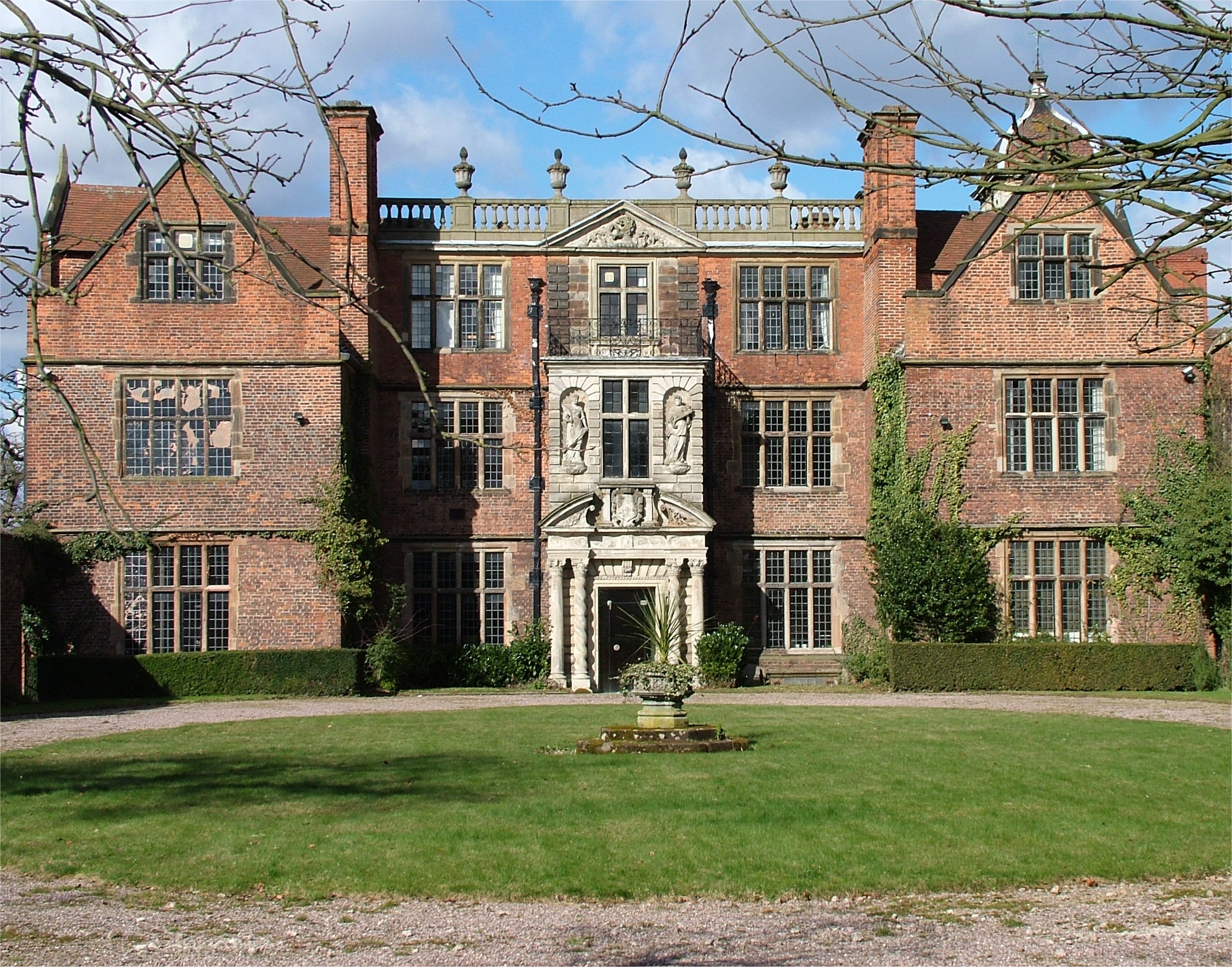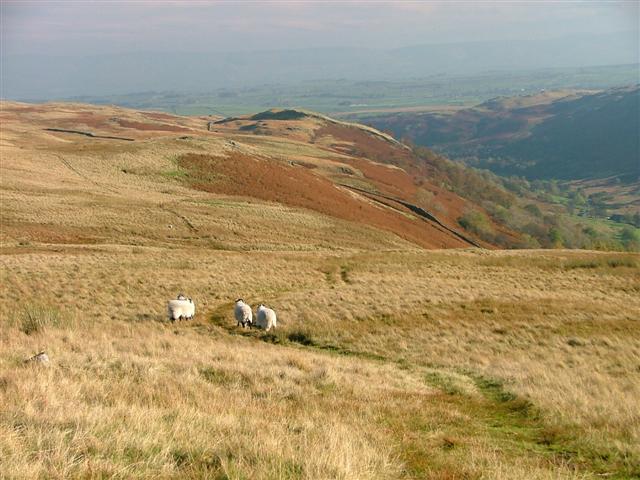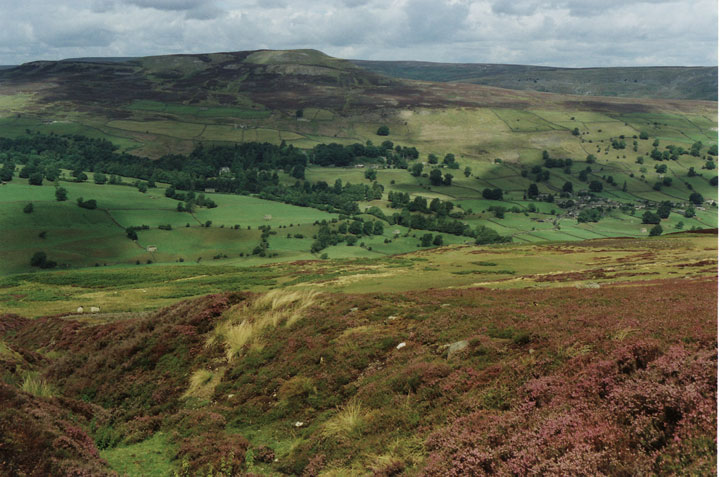|
Grinton
Grinton is a small village and civil parish in the Yorkshire Dales, North Yorkshire, England. Close to Reeth and Fremington, North Yorkshire, Fremington, it lies west of Richmond, North Yorkshire, Richmond on the B6270 road. On 5 July 2014, the Tour de France Stage 1 from Leeds to Harrogate passed through the village. The route would have been repeated, if not for the changing of the route due to high rainfall, in the Men's road race in the 2019 UCI Road World Championships, 2019 UCI World Championships going through the climb ''Grinton moor'', which lasted for at an average gradient of 7%. History The manor of Grinton existed prior to the Norman conquest of 1066. Under William the Conqueror, it passed to Alan Rufus, and then to the family of Walter de Cantilupe. The manor came under the ownership of Bridlington Priory until the dissolution of the monasteries when it came into the hands of the Swale family. Humphrey Wharton operated lead mining in the area in the 17th centu ... [...More Info...] [...Related Items...] OR: [Wikipedia] [Google] [Baidu] |
River Swale
The River Swale in Yorkshire, England, is a major tributary of the River Ure, which becomes the River Ouse, Yorkshire, River Ouse, that empties into the North Sea via the Humber Estuary. The river gives its name to Swaledale, the valley through which it flows. The river and its valley are home to many types of flora and fauna typical to the Yorkshire Dales. Like similar rivers in the region, the river carves through several types of rock and has features typical of both River erosion, river and glacial erosion. The River Swale has been a contributory factor in the settlements that have been recorded throughout its history. It has provided water to aid in the raising of crops and livestock, but also in the various mining activities that have occurred since Roman times and before. The river is said to be the fastest flowing in England and its levels have been known to rise in 20 minutes. Annual rainfall figures average 1800 mm p.a. in the headwaters and 1300 mm p.a. ... [...More Info...] [...Related Items...] OR: [Wikipedia] [Google] [Baidu] |
Deer Park (England)
In Middle Ages, medieval and Early Modern period, Early Modern Kingdom of England, England, Medieval Wales, Wales and Lordship of Ireland, Ireland, a deer park () was an enclosed area containing deer. It was bounded by a ditch and bank with a wooden park Palisade, pale on top of the bank, or by a stone or brick wall. The ditch was on the inside increasing the effective height. Some parks had deer "Salter (trap), leaps", where there was an external ramp and the inner ditch was constructed on a grander scale, thus allowing deer to enter the park but preventing them from leaving. Deer parks could vary in size from a circumference of many miles down to what amounted to little more than a deer paddock. The landscape within a deer park was manipulated to produce a habitat that was both suitable for the deer and also provided space for hunting. "Tree dotted lawns, tree clumps and compact woods" provided "launds" (pasture) over which the deer were hunted and wooded cover for the deer t ... [...More Info...] [...Related Items...] OR: [Wikipedia] [Google] [Baidu] |
Jacobean Architecture
The Jacobean style is the second phase of Renaissance architecture in England, following the Elizabethan style. It is named after King James VI and I, with whose reign (1603–1625 in England) it is associated. At the start of James's reign, there was little stylistic break in architecture, as Elizabethan trends continued their development. However, his death in 1625 came as a decisive change towards more classical architecture, with Italian influence, was in progress, led by Inigo Jones. The style this began is sometimes called Stuart architecture, or English Baroque (though the latter term may be regarded as starting later). Courtiers continued to build large prodigy houses, even though James spent less time on summer progresses around his realm than Elizabeth had. The influence of Flemish and German Northern Mannerism increased, now often executed by recruited craftsmen and artists, rather than obtained from books as in the previous reign. There continued to be very little b ... [...More Info...] [...Related Items...] OR: [Wikipedia] [Google] [Baidu] |
Pulpit
A pulpit is a raised stand for preachers in a Christian church. The origin of the word is the Latin ''pulpitum'' (platform or staging). The traditional pulpit is raised well above the surrounding floor for audibility and visibility, accessed by steps, with sides coming to about waist height. From the late Middle Ages, late medieval period onwards, pulpits have often had a canopy known as the sounding board, ''tester'' or ''abat-voix'' above and sometimes also behind the speaker, normally in wood. Though sometimes highly decorated, this is not purely decorative, but can have a useful acoustic effect in projecting the preacher's voice to the Church (congregation), congregation below, especially prior to the invention of modern audio equipment. Most pulpits have one or more book-stands for the preacher to rest his bible, notes or texts upon. The pulpit is generally reserved for clergy. This is mandated in the regulations of the Catholic Church, and several others (though not a ... [...More Info...] [...Related Items...] OR: [Wikipedia] [Google] [Baidu] |
Nikolaus Pevsner
Sir Nikolaus Bernhard Leon Pevsner (30 January 1902 – 18 August 1983) was a German-British art historian and architectural historian best known for his monumental 46-volume series of county-by-county guides, ''The Buildings of England'' (1951–74). Life Nikolaus Pevsner was born in Leipzig, Kingdom of Saxony, Saxony, the son of Anna and her husband Hugo Pevsner, a Russian-Jewish fur merchant. He attended St. Thomas School, Leipzig, and went on to study at several universities, Ludwig Maximilian University of Munich, Munich, Humboldt University of Berlin, Berlin, and Goethe University Frankfurt, Frankfurt am Main, before being awarded a doctorate by Leipzig University, Leipzig in 1924 for a thesis on the Architecture of Leipzig#Leipzig bourgeois town houses and oriel windows of the Baroque era, Baroque architecture of Leipzig. In 1923, he married Carola ("Lola") Kurlbaum, the daughter of distinguished Leipzig lawyer Alfred Kurlbaum. He worked as an assistant keeper at the Ge ... [...More Info...] [...Related Items...] OR: [Wikipedia] [Google] [Baidu] |
Baptismal Font
A baptismal font is an Church architecture, ecclesiastical architectural element, which serves as a receptacle for baptismal water used for baptism, as a part of Christian initiation for both rites of Infant baptism, infant and Believer's baptism, adult baptism. Aspersion and affusion fonts The earliest western fonts are found in the Catacombs of Rome. The fonts of many western Christian denominations that practice infant baptism are designed for baptisms using a non-immersive method, such as aspersion (sprinkling) or affusion (pouring). The simplest of these fonts has a pedestal with a holder for a basin of water. The materials vary greatly, consisting of carved and sculpted stone (including marble), wood, or metal in different shapes. Many fonts are in Octagon, octagonal shape, as a reminder of the new creation and as a connection to the Old Testament practice of circumcision, which traditionally occurs on the eighth day. Some fonts are three-sided as a reminder of the Holy T ... [...More Info...] [...Related Items...] OR: [Wikipedia] [Google] [Baidu] |
Norman Architecture
The term Norman architecture is used to categorise styles of Romanesque architecture developed by the Normans in the various lands under their dominion or influence in the 11th and 12th centuries. In particular the term is traditionally used for English Romanesque architecture. The Normans introduced large numbers of castles and fortifications including Norman keeps, and at the same time monastery, monasteries, abbeys, churches and cathedrals, in a style characterised by the usual Romanesque rounded arches (particularly over windows and doorways) and especially massive proportions compared to other regional variations of the style. Origins These Romanesque architecture, Romanesque styles originated in Normandy and became widespread in northwestern Europe, particularly in England, which contributed considerable development and where the largest number of examples survived. At about the same time, Hauteville family, a Norman dynasty that ruled in Sicily produced a distinctive va ... [...More Info...] [...Related Items...] OR: [Wikipedia] [Google] [Baidu] |
Pallbearer
A pallbearer is one of several participants who help carry the casket at a funeral. They may wear white gloves in order to prevent damaging the casket and to show respect to the deceased person. Some traditions distinguish between the roles of pallbearers and casket bearer. The former is a ceremonial position, carrying a tip of the pall or a cord attached to it. The latter do the actual heavy lifting and carrying. There may otherwise be pallbearers only in the symbolic sense if the casket is on an animal or vehicle. In Western cultures, the pallbearers are usually male family members, close friends, or colleagues of the deceased. A notable exception was the funeral of Lee Harvey Oswald, in which reporters, pressed into service to carry the coffin, outnumbered the mourners. In some African cultures, pallbearers are not family members but are staffs of professional funeral agencies who are paid for their services. The first duty of a pallbearer is to appear at least thirty mi ... [...More Info...] [...Related Items...] OR: [Wikipedia] [Google] [Baidu] |
Wicker
Wicker is a method of weaving used to make products such as furniture and baskets, as well as a descriptor to classify such products. It is the oldest furniture making method known to history, dating as far back as . Wicker was first documented in ancient Egypt, then having been made from pliable plant material, but in modern times it is made from any pliable, easily woven material. The word ''wicker'' or "wisker" is believed to be of Scandinavian origin: , which means "to fold" in Swedish. Wicker is traditionally made of material of plant origin, such as willow, rattan, reed (plant), reed, and bamboo, though the term also applies to products woven from synthetic fibers. Wicker is light yet sturdy, making it suitable for items that will be moved often like porch and patio furniture. ''Rushwork'' and ''wickerwork'' are terms used in England. A typical braiding pattern is called ''Wiener Geflecht'', Viennese braiding, as it was invented in 18th century Vienna and later most promine ... [...More Info...] [...Related Items...] OR: [Wikipedia] [Google] [Baidu] |
Corpse Road
Corpse roads provided a practical means for transporting corpses, often from remote communities, to cemetery, cemeteries that had burial rights, such as parish churches and chapel of ease, chapels of ease. In Britain, such routes can also be known by a number of other names, including bier road, burial road, coffin line, coffin road, coffin walk, corpse way, funeral road, lych way, lyke way, and procession way. Such "church-ways" have developed a great deal of associated folklore regarding ghosts, spirits, ghost#Terminology, wraiths, etc. Origins In late medieval times a population increase and an expansion of church building took place in Great Britain inevitably encroaching on the territories of existing mother churches or minster (cathedral), minsters. Demands for autonomy from outlying settlements made minster officials feel that their authority was waning, as were their revenues, so they instituted corpse roads connecting outlying locations and their mother churches (at the ... [...More Info...] [...Related Items...] OR: [Wikipedia] [Google] [Baidu] |
Keld, North Yorkshire
Keld is a village in the English county of North Yorkshire. It is in Swaledale, and the Yorkshire Dales National Park. The name derives from the Viking word ''Kelda'' meaning a spring and the village was once called ''Appletre Kelde'' – the spring near the apple trees. From 1974 to 2023 it was part of the district of Richmondshire, it is now administered by the unitary North Yorkshire Council. Keld is the crossing point of the Coast to Coast Walk and the Pennine Way long-distance footpaths at the head of Swaledale, and marks the end of the Swale Trail, a 20 km mountain bike trail which starts in Reeth. At the height of the lead-mining industry in Swaledale in the late 19th century, several notable buildings – now Grade II listed – were erected: they include the Congregational and Methodist chapels, the school and the Literary Institute. A tea room and small shop operate at Park Lodge from Easter to autumn. Out of season, local volunteers provide a self servi ... [...More Info...] [...Related Items...] OR: [Wikipedia] [Google] [Baidu] |
Swaledale
Swaledale is a valley in North Yorkshire, England. It is one of the Yorkshire Dales, which are part of the Pennines, and within the Yorkshire Dales National Park. It is named after the River Swale, which runs through it. Swaledale is the most northerly of the major dales. Geographical overview Swaledale runs broadly from west to east, from the high moors on the Cumbria–Yorkshire boundary at the watershed of Northern England to the market town of Richmond, where the dale meets the lowlands. Nine Standards Rigg, the prominent ridge with nine ancient tall cairns, rises on the watershed at the head of Swaledale. To the south and east of the ridge a number of smaller dales ( Birkdale, Little Sleddale, Great Sleddale and Whitsundale) join to form the narrow valley of upper Swaledale at the small village of Keld. From there, the valley runs briefly south then turns east at Thwaite to broaden progressively as it passes Muker, Gunnerside, Low Row, Healaugh and Reeth. The ... [...More Info...] [...Related Items...] OR: [Wikipedia] [Google] [Baidu] |









